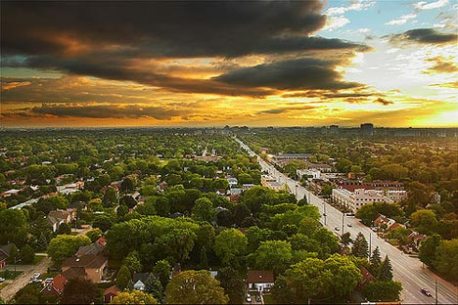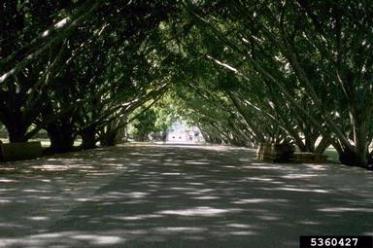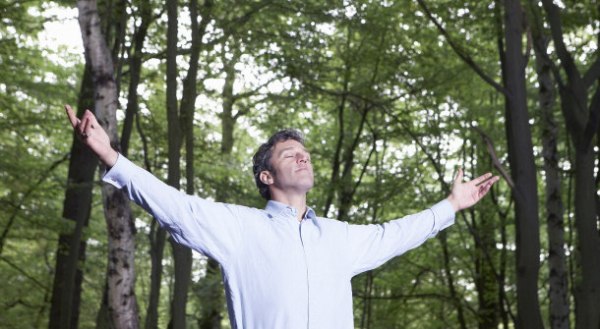Seminar by Tim Hall from the Woodland Trust, Scotland.
Before this seminar, I have to be completely honest and admit I had never been familiar with ‘urban forestry’ and never took into account the importance around this subject – the real importance of nature, the everyday aspects that are forgotten or ignored, and those who are managing it, and us.
Tim hall considered himself and many within this section a ‘ voice of biodiversity ‘.
What is urban forestry?
Google definition; “Urban forestry is the careful care and management of urban forests, i.e., tree populations in urban settings for the purpose of improving the urban environment. Urban forestry advocates the role of trees as a critical part of the urban infrastructure”.
However, Tim Halls definition of a urban forest and that of the Woodland Trust is “a woodland 2 kilometers of a city”.
Why is urban forestry important?
Urban forestry can be considered an essential part of urban dwellers everyday lives and delivering an immense variety of ecosystem services, along with many additional fundamental services to the immediate public. Some of the central ecosystem services:
Contribution from trees;
- Moderate local climate
- Act as wind protection for public and adjacent buildings, via the blocking of extreme winds
- Offer refuge from sunrays via provision of shaded areas
- Removal of significant quantities of humidity via water extraction
- In summer, leaves are lost which in turns allows heat to penetrate through
Some additional but greatly important services urban dwellers gain from urban forests;
- Water management – impact on rainfall effects, water absorption
- Public health improvement;

– Encourage urban dwellers to become more active daily – better views, creates relaxation
– Becoming a daily part of children’s education – understanding nature
 “Engage with Woodlands – Engage with Nature”
“Engage with Woodlands – Engage with Nature”
– Creating a positive environment for mental health ” reported urban residents stress/anxiety levels reduced when given ‘greenery’ view”.
– Reported to reduce after surgery recovery time
– Extraction of toxic dust/ particles
– Reduction in negative impact of ozone from vehicles and sunlight
– Pollution control
– Reduction in certain illnesses, such as asthma “asthma rates fell by 23% when individuals exposed to forests/trees”
…“In Chicago, it has been reported trees remove 10.8 tonnes of carbon each day”..
“Shinrin-Yoku aka Forest Bathing”
– Some cultures have thoroughly taken in the forests health benefits and adopted a hobby called ‘forest bathing’ – which is believed to increase lifespans? (Of course, that is still to be highly questioned, but causes no harm, and is merely considered therapeutic).
In 2008, researchers were supporting the health theory of nature and stated
- lowers blood pressure
- ability to ‘fight off depression’
- decreases stress
- and may even prevent cancer
And statistics did show regular walks on ‘a forest therapy trail’ did generally result in a decrease in the following areas:
On average;
- 12.4% decrease in the stress hormone cortisol
- 7% decrease in sympathetic nerve activity
- 1.4% decrease in blood pressure
- 5.8% decrease in heart rate
(Reference; http://capitalinteriorscapes.com/benefits-of-forest-bathing/)
Tim Hall then went on to expand further on the importance of urban forest regarding the fact a lot of urban dwellers may only ever have the opportunity to truly observe and engage with wildlife at these local forests, which in turn creates a further great importance.
Wildlife cannot be protected if it is not understood.
Challenges faced by Urban Forests;
- People complain
– due to fears/ concerns imbedded into peoples minds
So how can these fears be overcome?
- Preconceptions of hidden dangers must be removed
How?
- Children must be frequently encouraged
- Politicians must be encouraged in the movement and participate in planting more trees etc and focusing on management of these areas
Overall this seminar has truly opened my eyes to the huge importance of urban forests, local trees, and the surrounding nature, that myself, as an urban dweller, tend to disregard. However, since coming from a city with few ‘true’ forests and lack of woodland areas, back in the West Midlands, it has definitely improved my mind and overall quality of life by moving to Bangor, where the views are so much more picturesque.
I myself can vouch for the calming and peaceful effects increased woodland areas have on a person.
Therefore, I do believe Urban Forestry should become an encouraged movement within schools, with frequent outdoor activities, this is turn will encourage people there is nothing to be feared in regards to woods. Because, as Tim explained, once a few people overcome this fear and explore into these areas, others will follow, and i think we need to focus on launching this movement, right at the bottom. But i also think people need to become more aware of the nature around, even in urban cities where it may be limited, as like mentioned before to care for the importance of nature, it needs to be fully understood- right down to the trees along the pathways.
And then people may have a better understanding that by protecting nature, it in turn, protects us.







I really enjoyed reading your blog the layout invited me to continue reading and there was a nice variety of pictures. I agree i haven’t given much thought to the vast effects urban forestry can have, i live in the country side so haven’t had much experience of city live, I imagine that having a wealth of wildlife surrounding you can only be beneficial. I liked how you included the benefits in terms of both environment and mental health. I found an interesting paper that speaks in depth about the benefits of urban forest and the social relationship between forests and communities that you may find interesting.
Click to access bok%253A978-90-481-9806-1.pdf
Pingback: February Comments | Graham Pardoe
Even though I didn’t go to this seminar, I have to agree with the comment above that I enjoyed reading your blog and with a sample layout I wanted to keep reading. I liked that the variety of picture broke up the text to keep the reader interested.
I have to agree that I haven’t given much thought either to the effects urban forestry even though I live in the city. However after reading your blog, I can say that I have thought about it more on the benefits of the wealth of wildlife surrounding and the benefits for the environment.
Pingback: Comments | Jess Lincoln – Seminars